Barrel cactus, large and small
Out of all the types of cactus, barrel cactus are my favorite. They don’t have the most impressive flowers (and many don’t flower until they are 10-20 years old) but I find their symmetrical shape and often fantastical spines very attractive.
Since many species of barrel cactus grow quite large, they are at their most impressive in their native habitat (as at the Arizona-Sonora Desert Museum or in Joshua Tree National Park). But when planted in a pot, you can get up close and personal and possibly appreciate their beauty even more.
Take a look at the barrel cactus living on our front porch:
Golden barrel cactus (Echinocactus grusonii)
Golden barrel cactus (Echinocactus grusonii)
Fishhook barrel cactus (Ferocactus wislizenii)
Fishhook barrel cactus (Ferocactus wislizenii)
Fishhook barrel cactus (Ferocactus wislizenii)
Assorted barrels
Assorted barrels
Assorted barrels
Assorted barrels
Parodia magnifica
Golden-spined barrel cactus (Ferocactus chrysacanthus)
LEFT: Melocactus azureus RIGHT: Ferocactus glaucescens
Turk’s cap cactus (Melocactus azureus)
Texas horse crippler (Echinocactus texensis)
Emory’s barrel cactus (Ferocactus emoryi)
Emory’s barrel cactus (Ferocactus emoryi)
Devil’s tongue barrel cactus (Ferocactus latispinus)
Scott Calhoun’s 2012 book The Gardener's Guide to Cactus: The 100 Best Paddles, Barrels, Columns, and Globes offers a great selection of garden-worthy cacti. As its name suggests, it has a chapter dedicated to barrel cacti, which includes many of the species shown in this post. Even if you’re not a big cactus fan, Scott’s book is a must-see for the stunning photography alone. At a street price of under $20 it’s a great value.

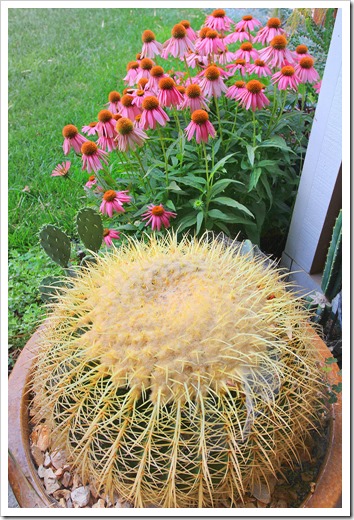
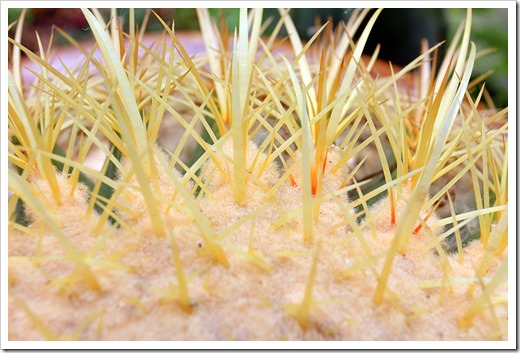
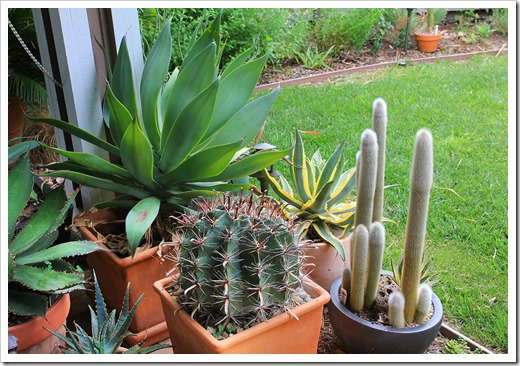
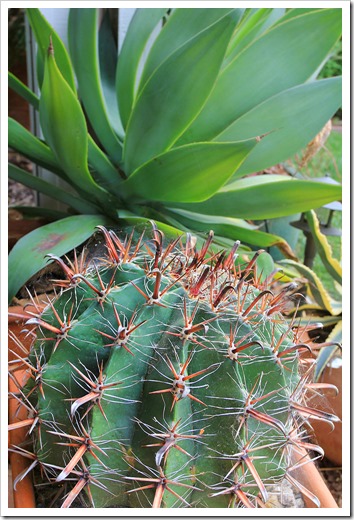
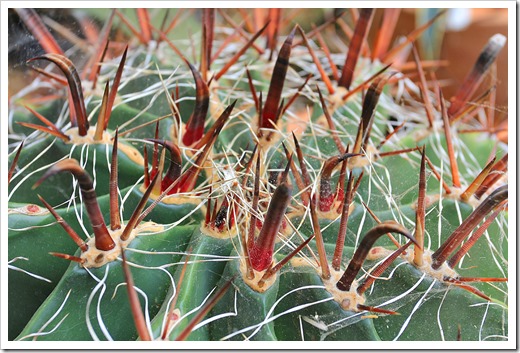
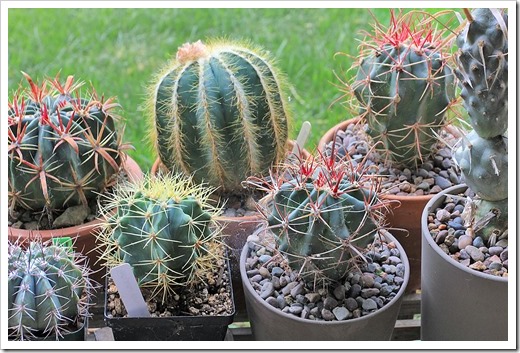
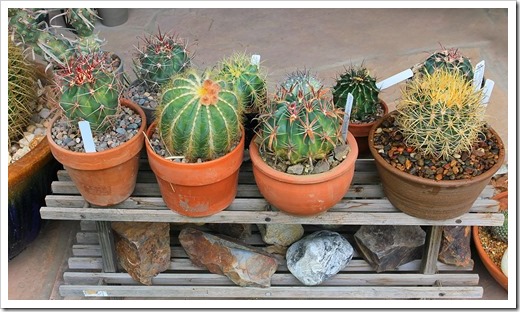
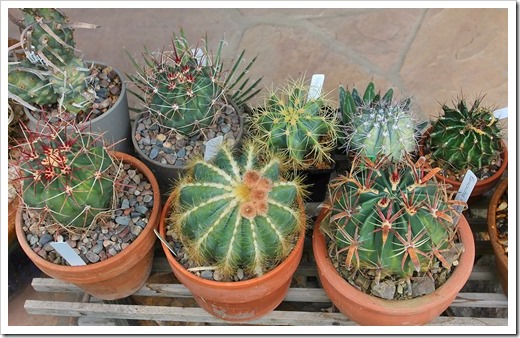
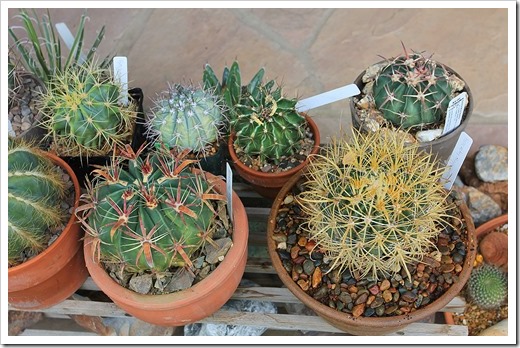
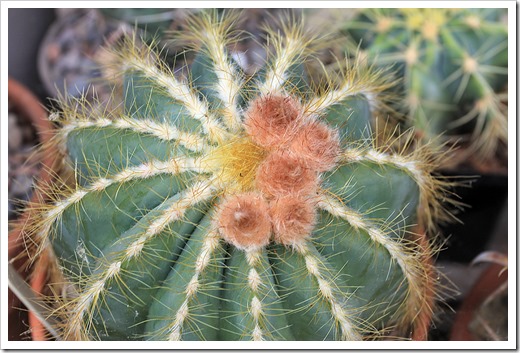
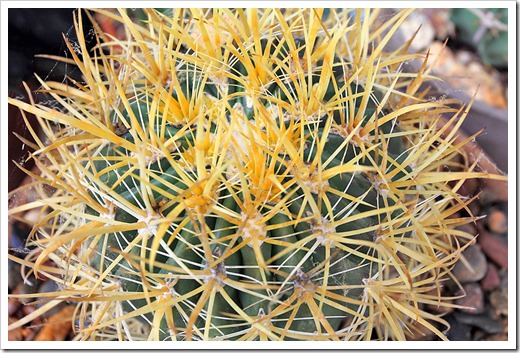

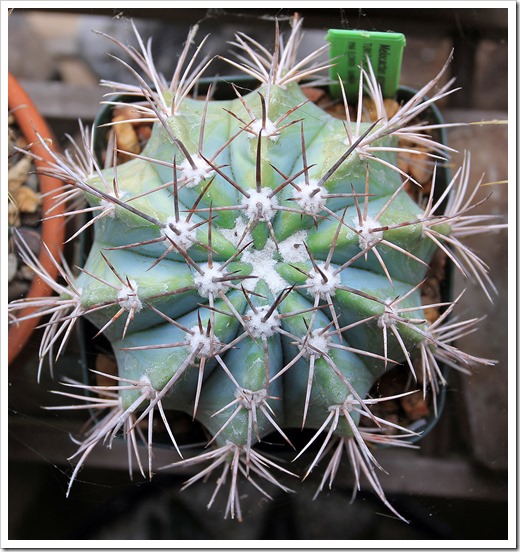

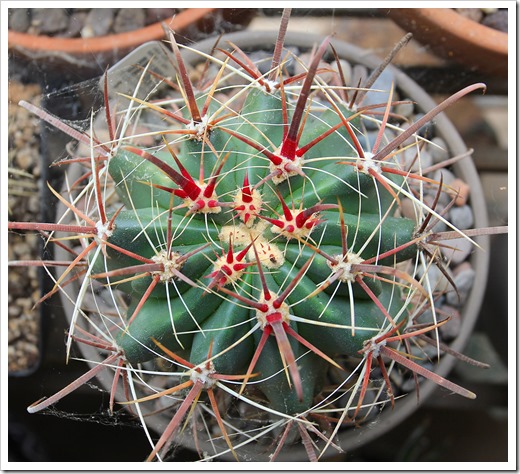
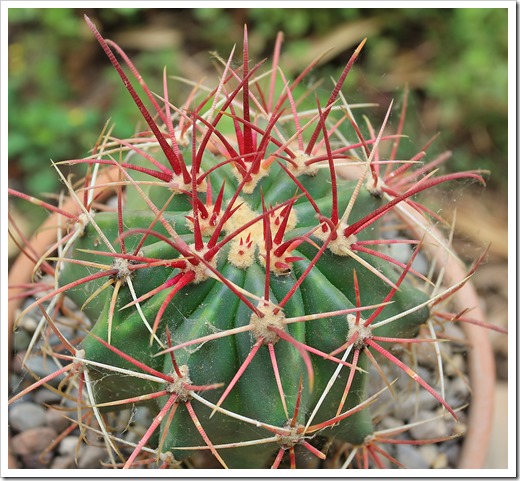
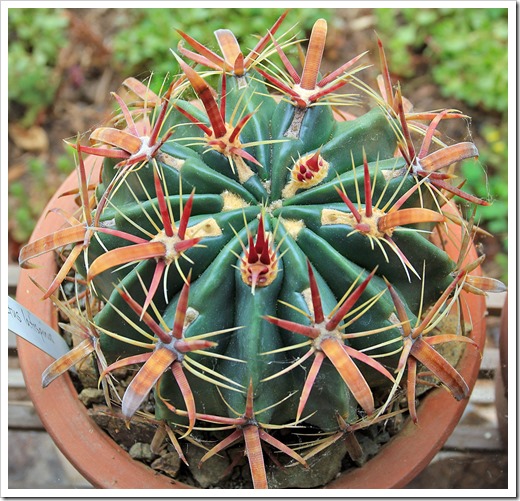
Great collection there Gerhard, and I like the way you grouped your collection together, they look good like that!
ReplyDeleteIt was more out of necessity than aesthetics but thanks :-).
DeleteAgreed: nice collection, and they look great grouped together! Will larger pots make them size up faster? I know "fast" is a relative term with cactus, but I wasn't sure if these preferred to be potbound -- I know some do. I was trying to pick my favorite, but couldn't!
ReplyDeleteAny chance you'll be planting these in the ground, or are your winters too cold?
I'm sure that pot size dictates growth and that in the ground they would grow larger. Some day I'll have a mounded bed specially for cacti but for now they'll have to make do with pots.
DeleteIn terms of hardiness, all of them would be hardy here except for Melocactus azureus (not sure about that one).
Cool collection! Love them all but am especially fond of golden barrel cactus as the color of the spines makes it seem to glow!
ReplyDeleteI agree. Golden barrel cactus may be common, but it's hard to beat for beauty and ease of cultivation.
DeleteA great collection, as others have said they look good all grouped together.
ReplyDeleteGreat collection! Love them all but am really mesmerize of golden barrel cactus.
ReplyDeleteThe images depicting F. emoryi are wrong. They look more like F. gatesii or a sparsely spined F. tiburonensis
ReplyDeleteThe F. emoryi are likely F. gatesii
ReplyDeleteI wouldn't mind if they were gatesii. But I still have the label: Ferocactus covillei (now emoryi), $3.95.
DeleteDo you have any documentation (provenance) on the source of the barrel cactus?
DeleteHere is the original plant tag: LINK
DeleteIf that's all the data you have, a long shot that should work (assuming they keep records of their seed sources) is to contact Monterey Bay Nursery and see if anyone there can help provide their seed acquisition. and cultivation record(s).
ReplyDeleteLet me know if you get any response. I'm anxious to find out.